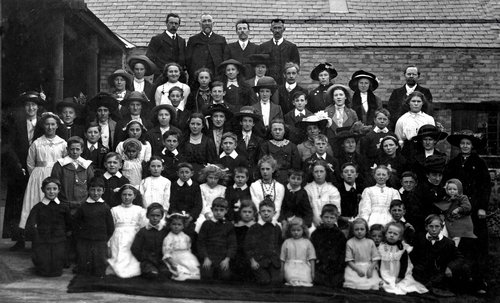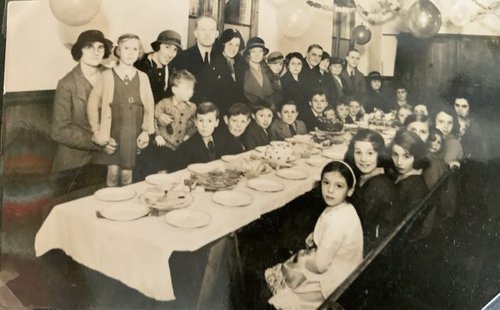“The children meet twice a week, every Sunday and Monday. They are a wild little company, but seem willing to be instructed. I labour among them, earnestly desiring to promote the interests of the Church of Christ.”
A letter from Hannah Ball to John Wesley, 16 December 1770.
Hannah Ball started her Sunday School [the first Sunday School in Britain] in High Wycombe in 1769 and there were numerous similar local initiatives. From 1780 onwards, through publicity about Robert Raikes' work in Gloucester, Sunday Schools were founded in the major towns of England. John Wesley particularly commended the large Methodist Sunday School at Bolton, Lancs.
Often motivated by the gospel, their founders also desired to reform behaviour by engaging children's minds. Children were in a 'lawless state' and 'allowed to run wild that day' (Raikes). Reading and writing were taught and teachers worked with small classes, nurturing literacy, social skills and Christian values, often with the Bible as the main resource. Jabez Bunting opposed the teaching of writing on Sunday and at his insistence in 1827 the WM Conference adopted 'General Principles and Rules' for the management of its schools. These asserted that they 'should be strictly and entirely religious institutions … for the Christian instruction and education of the children of the poor'. Reading, as a means of inculcating a knowledge of the Bible was one thing; writing was another matter. The Wesleyan Methodist Sunday School Union was inaugurated at a meeting in Wesley's Chapel, London in November 1874.

Primitive Methodist regulations similarly discouraged the teaching or reading and writing on the Lord's Day. The first PM Sunday School dates from as early as 1814, when Hugh Bourne invited Thomas Moorcroft of Brook Farm, Boylestone, Derbyshire, to become its Superintendent. A move in 1832 to form a PM Sunday School Union came to nothing until unions were formed in the Leeds District in 1857 and connexionally in 1874, under the leadership of Dr. Joseph Wood.
With the opening of Methodist day schools, the religious character of Sunday Schools (which eventually included adults) became dominant. By 1900 the Sunday School movement was an international lay-led movement among English-speaking Protestants, often in purpose-built premises and with a vision of the global use of the Bible. The Sunday School 'Anniversary', often with processions ('walks') included reunions of scholars and the presentation of songs and recitations in church, was a highlight of the year. 'Outings' and 'Treats' provided rare pleasure for children from poor families. From 1916 the British Lessons Council provided thematic material, graded by age, of which Partners in Learning is the successor.

Between 1900 and 1932 the number of children in Methodist Sunday Schools in Britain dropped by half to just under one million. World War II brought further decline. During the 1960s changed use of Sunday, increased mobility and fewer children per family affected numbers. Sunday School sessions were moved to the morning, leading to the concepts of 'Junior Church' and 'Family Church', which integrated Sunday Schools into church life. Links between learning and worship led to all-age worship. In many places all that remains of the traditional Sunday School is the name and the use of curriculum material in classes led by lay teachers. Nevertheless, this method of Christian education is of immense importance throughout the world.
Authored by C. Hughes Smith for DMBI: A Dictionary of Methodism in Britain and Ireland